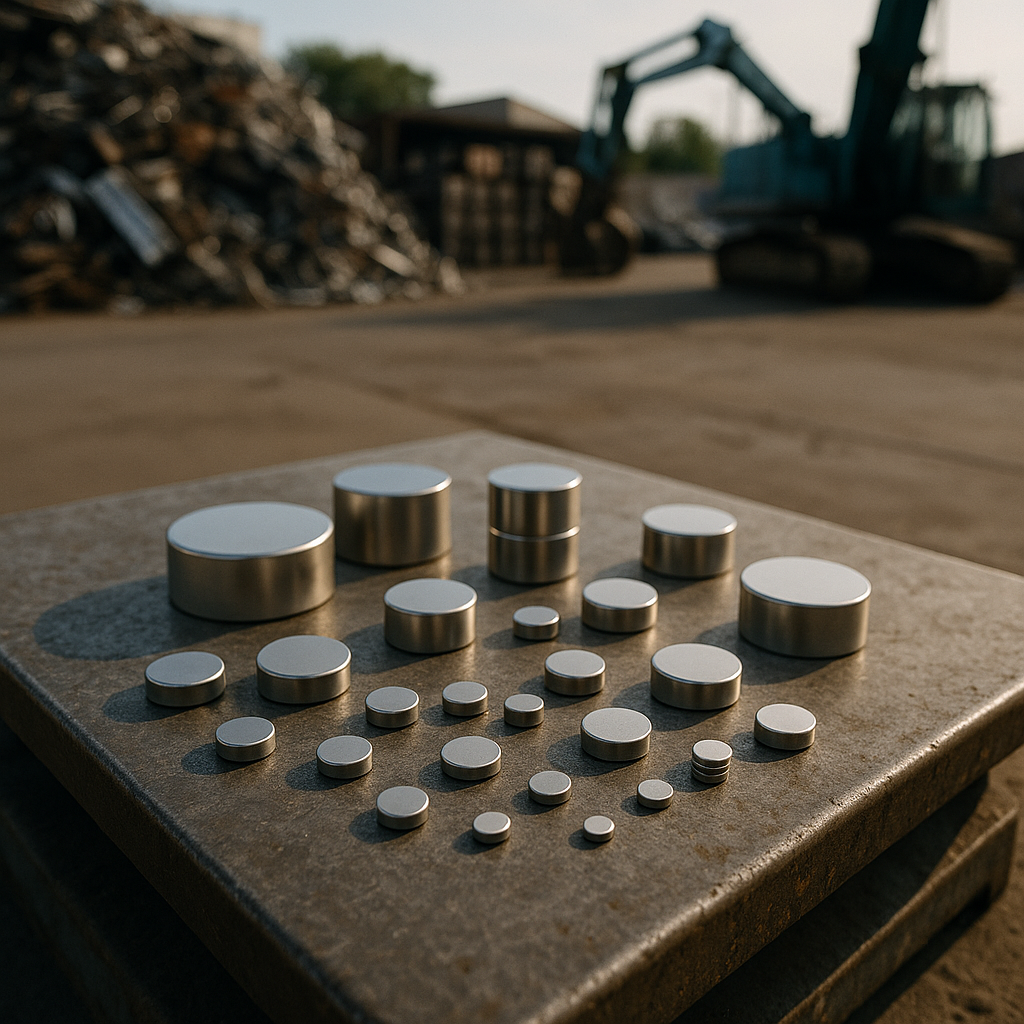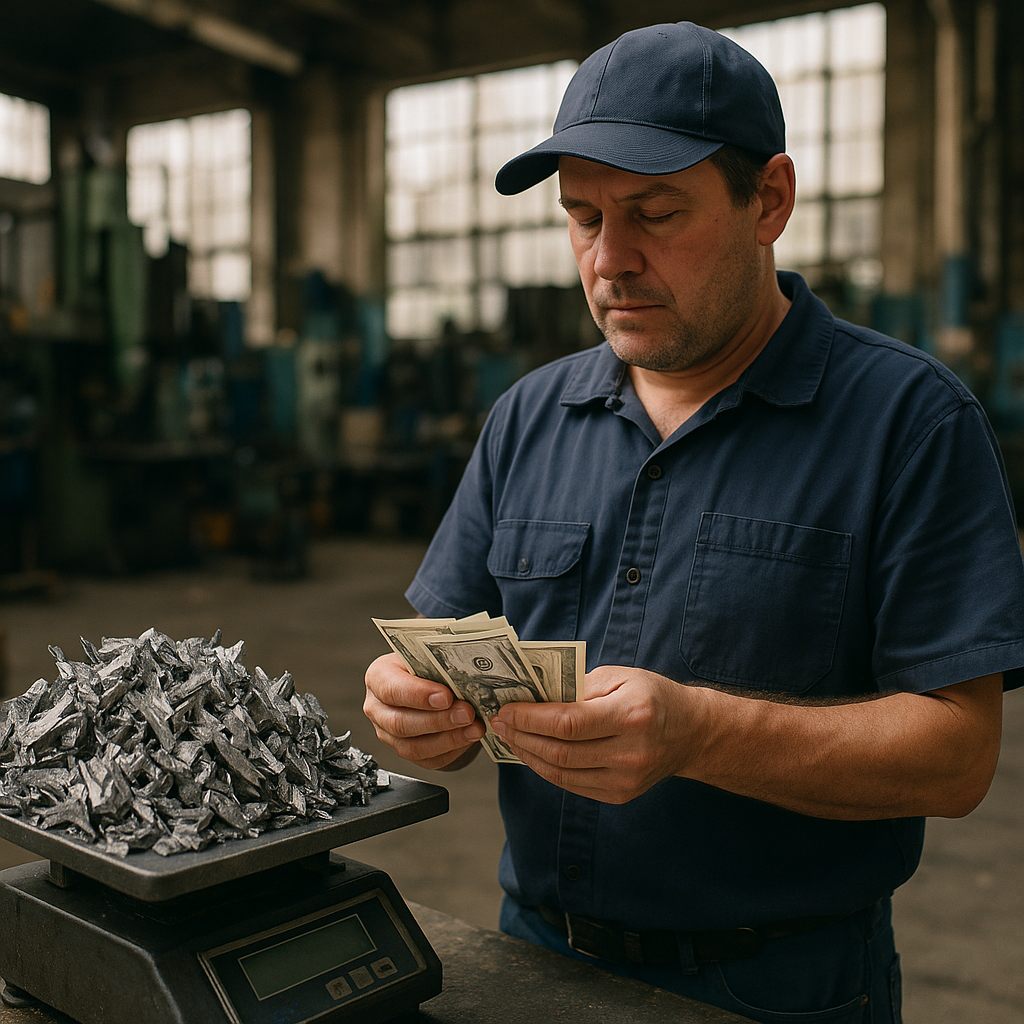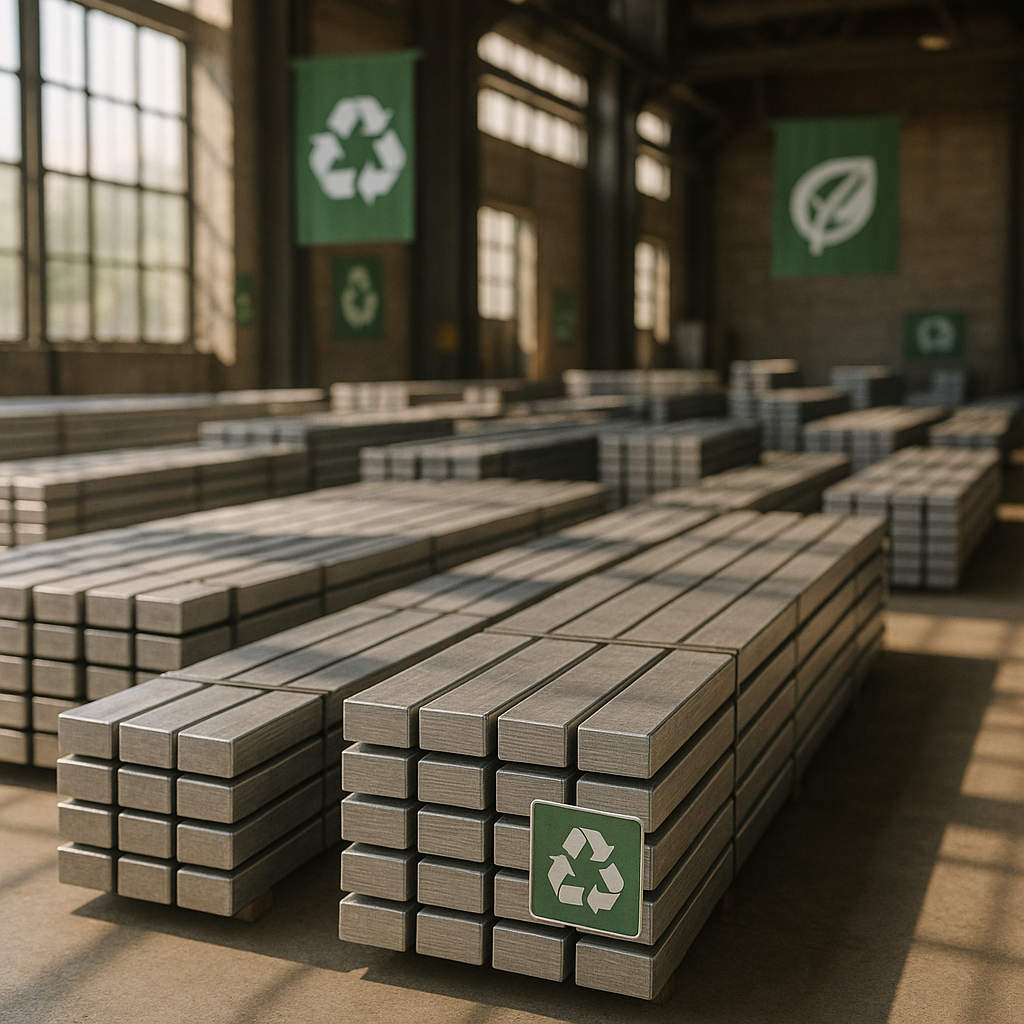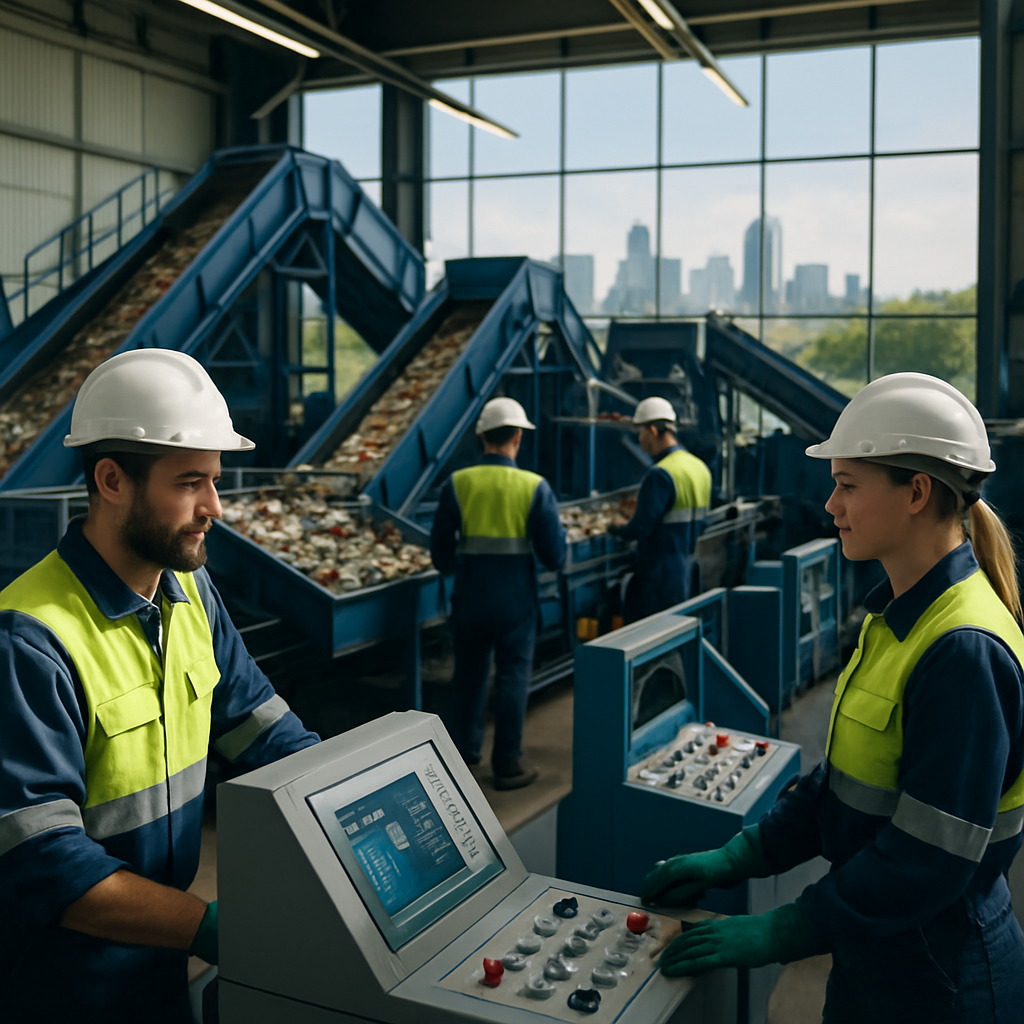5901 Botham Jean Blvd, Dallas, TX 75215
What Are the Key Benefits of Recycling Metal?
September 3, 2025Recycling steel and tin cans saves between 60% and 74% of the energy required to produce them from raw materials. Metal recycling is a highly effective strategy for both environmental protection and economic growth. Every ton of recycled metal marks a significant victory for sustainability.
Metal recycling offers substantial benefits on multiple fronts. It conserves our planet’s finite natural resources by reducing the need to extract virgin raw materials. Mining creates large excavations in the earth, disrupting ecosystems and habitats. By recycling metal, we help preserve these natural spaces.
Are your business or municipality’s sustainability goals being met through effective waste management practices? Beyond environmental advantages, metal recycling creates more jobs than sending materials to landfills, supports domestic manufacturing, and helps organizations meet increasingly important sustainability standards. From economic opportunities to ecological protection, metal recycling offers a rare win-win solution to our resource challenges.
How Does Metal Recycling Benefit the Environment?

Metal recycling is one of the most effective strategies for environmental protection. Recycling metals instead of producing them from raw materials results in numerous positive environmental impacts beyond just waste reduction.
A primary benefit of metal recycling is the conservation of natural resources. Mining for virgin metal involves extensive land disruption and resource use. The EPA estimates that recycling one ton of steel conserves 2,500 pounds of iron ore, 1,400 pounds of coal, and 120 pounds of limestone, preserving these resources for future generations.
Energy efficiency is another compelling reason to recycle metals. The energy savings are significant across various metal types. Aluminum recycling uses 95% less energy than producing it from bauxite ore. Steel recycling requires 60-70% less energy than creating new steel. Copper recycling saves approximately 85% of the energy compared to mining and processing new copper.
These energy savings lead to significant emissions reductions. The recycling industry reduces greenhouse gas emissions by about 29 million tons of CO₂ annually, equivalent to removing 6.3 million cars from the road. The impact for individual metals is similarly impressive. Recycling one ton of aluminum prevents 9 tons of CO₂ emissions, one ton of steel recycling reduces emissions by 2 tons, and copper recycling prevents up to 3.5 tons of CO₂ per ton processed.
Reducing Pollution and Protecting Ecosystems
Metal recycling significantly reduces pollution compared to primary production methods. Mining operations can release toxic substances into soil and water, threatening ecosystems and human health. The extraction process often involves chemicals like mercury and cyanide that can contaminate water sources.
Recycling metals avoids these harmful extraction processes. By keeping metals in circulation, we reduce the need for new mining operations that disrupt habitats and biodiversity. This protection helps maintain the ecological balance essential for healthy ecosystems.
Water conservation is another crucial environmental benefit. Metal production from raw materials demands vast amounts of water for processing and cooling. Recycling drastically reduces this water use, helping preserve this increasingly precious resource.
Perhaps most importantly, metal recycling prevents toxic materials from entering landfills. Metals like lead, cadmium, or mercury can leach into groundwater and soil, causing long-term contamination. By recycling these metals, we contain potential toxins and convert them into valuable resources instead of environmental hazards.
Supporting the Circular Economy
Metal recycling is a cornerstone of the circular economy model. Unlike many materials, metals can be recycled repeatedly without losing their essential properties. This perfect circularity makes metals ideal for sustainable material cycles.
The economic benefits complement the environmental advantages. Metal recycling creates more jobs than landfill operations and generates billions in economic activity. These incentives drive higher recycling rates and enhance environmental benefits.
Technological advances continue to improve metal recycling’s efficiency and effectiveness. Advanced sorting technologies using X-ray fluorescence, artificial intelligence, and laser-induced breakdown spectroscopy allow for more precise separation of metal types, enhancing the quality of recycled materials.
By prioritizing metal recycling, we harness a proven strategy for reducing our environmental footprint while maintaining the materials essential for modern life. Each recycled can, appliance, or construction component represents a small but meaningful step toward a more sustainable future.
What Are the Economic Advantages of Metal Recycling?

Metal recycling generates significant economic value across many sectors. According to the Institute of Scrap Recycling Industries, the industry contributes over $105 billion annually to the U.S. economy. This highlights metal recycling not just as an environmental necessity but as a substantial economic driver.
The industry is a vital job creator, offering employment opportunities across the entire recycling supply chain. From collection specialists and truck drivers to processors and administrative staff, recycling facilities provide diverse jobs for workers with varying skills and educational backgrounds. These roles are generally stable, even during economic challenges, offering resilient employment in local communities.
For manufacturers, recycled metal presents significant cost advantages. Using recycled materials instead of virgin ore considerably reduces production expenses. For instance, aluminum recycling requires just 5% of the energy needed to produce it from raw materials. These savings help manufacturers stabilize budgets against volatile global metals markets and maintain competitive pricing.
Financial Benefits for Businesses
Businesses that adopt metal recycling programs gain multiple financial benefits. Many have transformed waste into valuable resources, yielding significant cost savings and new revenue opportunities.
An immediate benefit is reduced disposal costs. By diverting metal from waste streams, companies lower trash pickup and disposal fees. Manufacturing facilities producing substantial metal waste can achieve notable savings through these reductions.
Additionally, selling scrap metal generates direct revenue. Instead of paying to dispose of metal waste, businesses can sell these materials to recycling facilities. Metals like copper, aluminum, brass, and stainless steel often command high prices. For manufacturers, construction companies, and automotive businesses, this ‘waste’ can hold considerable value when properly sorted and recycled.
- Reduced raw material expenses by using recycled metals
- Lower waste disposal costs and decreased pickup services
- New revenue streams from selling scrap metal
- Enhanced brand reputation from sustainable practices
- Reduced energy costs in manufacturing processes
Economic Impact on Communities
The economic benefits of metal recycling extend beyond individual businesses to strengthen entire communities. The recycling industry supports a business ecosystem involving contractors, electricians, demolition crews, and transportation services.
Metal recycling facilities also contribute significant tax revenue. They pay property taxes, income taxes, and business fees supporting local government operations. Their employees contribute through income tax payments, while broader economic activity generates sales tax revenue that funds essential community services like schools, emergency services, and infrastructure projects.
Research indicates that recycling creates more jobs than traditional waste management methods. A study in the Institute of Scrap Recycling Industries report found recycling can create up to 10 times more jobs than landfilling or incineration for the same material amount. These jobs span collection, processing, manufacturing, and administration.
Environmental cost savings also translate to economic benefits. By diverting metal from landfills, municipalities reduce waste management costs and extend landfill lifespan. The reduced pollution from decreased mining activities lowers public health expenses and environmental remediation costs for communities.
Metal recycling provides stable pricing structures for manufacturers compared to the volatility of virgin materials. While virgin material prices fluctuate with global supply chain disruptions, recycled materials tend to offer more consistent pricing, aiding in long-term financial planning and market stability.
How Does Metal Recycling Support Sustainability Goals?

Metal recycling is a key element in sustainable resource management and the circular economy. For organizations committed to environmental responsibility, recycling metals provides tangible benefits that align with corporate sustainability targets and broader ecological objectives.
Building Blocks of the Circular Economy
The circular economy represents a shift from traditional linear production models. Instead of the wasteful “take-make-dispose” approach, circular systems keep materials in use through multiple lifecycles. Metals are ideal for this framework because they maintain their properties no matter how many times they are recycled.
As the Ellen MacArthur Foundation explains, metal resources in a circular economy flow through a closed loop where products are designed for durability and eventual recycling. Materials are reused through multiple cycles while minimizing waste and pollution. This decouples economic growth from resource consumption and regenerates natural systems.
Achieving Zero Waste Initiatives
Companies with zero waste goals find metal recycling particularly beneficial. Recycling steel reduces waste by 76% compared to primary production methods. Organizations like Ford Motor Company have adopted comprehensive metal recycling programs at manufacturing facilities to minimize landfill waste.
Zero waste certification standards often require diversion rates exceeding 90%. Metal recycling helps companies reach these thresholds by recovering materials that would otherwise contribute to landfill volume. This waste reduction offers both environmental benefits and cost savings through reduced disposal fees.
Carbon Footprint Reduction
Metal recycling significantly reduces carbon emissions compared to producing new materials. Recycling aluminum saves about 95% of the energy needed for primary production, while steel recycling cuts CO2 emissions by up to 58%. These energy savings directly reduce the carbon footprints of organizations involved.
Apple has used metal recycling to further its carbon neutrality goals. The company uses 100% recycled aluminum in the enclosures of several products, significantly reducing their manufacturing carbon footprint. This supports Apple’s broader aim of achieving carbon neutrality across its entire business by 2030.
According to the Institute of Scrap Recycling Industries, “For each ton of steel recycled, we prevent 1.28 tons of CO2 emissions.” These reductions support companies in meeting science-based greenhouse gas reduction targets and global climate action goals.
Enhancing Brand Reputation and Stakeholder Relations
Companies implementing robust metal recycling programs often enjoy an enhanced brand reputation. Consumers increasingly favor environmentally responsible businesses, with studies showing that sustainability practices influence purchasing decisions for over 60% of consumers. Metal recycling provides a concrete demonstration of environmental commitment that resonates with these conscious consumers.
Stakeholder relations also benefit from metal recycling initiatives. Investors are increasingly focused on environmental performance when making investment decisions. Strong recycling programs signify responsible resource management, potentially improving access to capital from sustainability-focused investors.
Industry Standards and Compliance
Metal recycling helps companies meet industry standards and compliance requirements. Recycled content standards are becoming more common in sectors ranging from construction to consumer goods. Meeting these standards through metal recycling can open new markets and ensure compliance with evolving regulations.
Sustainability reporting frameworks, such as the Global Reporting Initiative (GRI), include waste management and resource efficiency metrics. Companies with solid metal recycling programs can demonstrate better performance on these metrics, enhancing their sustainability reporting outcomes and transparency with stakeholders.
Economic Benefits Supporting Sustainability
The economic advantages of metal recycling reinforce its sustainability benefits. According to the American Iron and Steel Institute, using recycled steel can reduce production costs by 33% compared to virgin materials. These savings create financial incentives aligned with environmental goals, making sustainability initiatives more economically viable.
Companies often reinvest these savings into further sustainability improvements, creating a cycle of environmental and economic benefits. This alignment of financial and environmental incentives makes metal recycling particularly valuable for organizations pursuing triple-bottom-line sustainability approaches.
Kenneth Boulding, an economist and early circular economy advocate, noted that sustainable systems require “moving from a ‘cowboy economy’ where we exploit seemingly limitless resources to a ‘spaceship economy’ where we carefully manage finite resources.” Metal recycling embodies this transition by conserving rather than consuming metals.
Conclusion: The Future of Metal Recycling

Metal recycling is pivotal in sustainable resource management, offering substantial environmental and economic benefits. By redirecting metals from landfills, we conserve natural resources, decrease energy consumption, and significantly reduce greenhouse gas emissions. The statistics demonstrate this clearly: recycling aluminum conserves up to 95% of the energy required for virgin production, and steel recycling can cut CO2 emissions by as much as 58%.
Economically, metal recycling generates numerous jobs across the collection, processing, and manufacturing sectors. It enhances supply chain resilience by minimizing reliance on raw material imports. As new technologies in sorting, processing, and extraction develop, the efficiency of metal recycling improves, supporting sustainable industrial practices and circular economy objectives.
The outlook for metal recycling is promising, with innovations in AI-driven sorting, flash joule heating, and biomining techniques expanding what is achievable. These advancements are set to increase recycling efficiency and accessibility while broadening the range of recoverable materials. For both businesses and individuals, engaging in metal recycling is not just environmentally responsible—it’s economically wise.
Are you ready to impact sustainable metal recycling? Contact Okon Recycling at 214-717-4083 for all your recycling needs.
